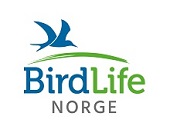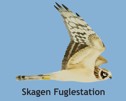
|
|
Chiffchaff, Lista 2016. For the first time the Willow Warbler had a lower spring total than its relative, the Chiffchaff. This species has been ringed with a very high number, 83 individuals were ringed in spring (average is 45). Spring report 2016
By Aïda López Lista Bird Observatory completed in 2016 its 27th consecutive year of spring ringing campaign. The bird station has been run for a total of 87 days from March 15 until June 10. 13 mist-nets have been currently used on the standardized (138 meters) and the results have been slightly lower than normal years with 991 birds ringed (average for spring is 1037 ringed birds) of 49 different species. The average temperature has been higher than normal most of the year, being 1.9°C higher than the average from March until June. The precipitation during this period has been around normal, although it has been a rainy May. Windy days have not been abundant, having only a few days with strong winds from NW and some periods with Eastern winds. We deduce that due to the combination of a mild winter and a warm spring, several species have arrived earlier than normal, some of them reaching record early arrivals, such as Common Redstart (13 April), Black Redstart (15 March), Blackcap (1 April) and Meadow Pipit (30 March). The Meadow Pipit is not uncommon in the area in March but it has never been ringed that early. Regarding the weather conditions this spring we expect a promising breeding season for several species, in contrast of the situation we had last year, after a cold and rainy spring. Although many species have kept in normal numbers, the amount of some thrushes and tits have been rather low. However, we know that lots of Blackbirds arrived to Lista just 2 days before starting the ringing campaign (a minimum of 300 individuals seen in the lighthouse area on March 13). This fact and the probability of having in the future milder winters and warmer springs, and considering that more species are arriving earlier than the past years, should make us consider an earlier start of future ringing campaigns. The fact that the Blackbird was recorded with lower ringing numbers this spring is probably mostly due to their arrival before the start of the campaign. Finches have also appeared in low numbers, except Linnet and Goldfinch, with the highest number Goldfinch ever (6 individuals this year compared to one on average). On the contrary, most of the warblers and some other long-distant migrants have been ringed in high numbers this spring, such as Chiffchaff, Marsh Warbler, Icterine Warbler, Redstart, Black Redstart and White Wagtail. One the other hand, the Willow Warbler, which is on average the most abundant species in the nets during spring, had the lowest number ever this spring. Only 62 individuals ringed. This is less than half of the average (1990-2016: 149 individuals). For the first time the Willow Warbler had a lower spring total than its relative, the Chiffchaff. The 5 top species in the nets have been European Robin (173), Common Starling (94), Chiffchaff (83), Willow Warbler (62) and Lesser Redpoll (53). In the following table it is possible to see that in 2016 we have got the top 5 average species, Willow Warbler, Robin, Chiffchaff and Lesser Redpoll, excepting the Blackbird for the reasons explained above. It is remarkable that the Willow Warbler has changed from being the most ringed species to the 4th place in 2016 (see figure 2). As notable species captured in the nets, we have had 1 Common Kestrel, 1 Great Grey Shrike, 1 Firecrest, 4 Marsh Warblers, 1 Blyth´s Reed Warbler and 1 Common Nightingale. The Great Grey Shrike was caught in the nets for the first time in a spring campaign and the Common Nightingale was the third record, being the other two in 2009. We have continued this year to track the Northern Wheatear nests and put, in addition to the metal ring, a colour ring with a 3 letter code to both adults and chicks within a limited area. Less effort could be done this year for lack of expert personnel. There have also been less breeding wheatears in the area than last year. Although the ringing numbers show a normal amount of this species, net no.1 was closed for longer periods last year because of the wind, which reduced the ringing numbers, especially of Meadow Pipit, Starling and Northern Wheatear, species that are mainly caught in this net. This probably explains why these three species have higher numbers in observations in 2015 than in 2016, but higher numbers in the ringing this year. A total of 205 species have been observed in the area from January to June 2016. The deviations show that some species have been observed in rather high numbers, such as Red Knot, Barnacle Goose, European Shag and Eurasian Wigeon. On the other hand, there have only been a few days with winds from NW which have resulted in a low numbers of birds at the sea migration counts. Although a few waders as the Wood Sandpiper, Whimbrel and Red Knot have been in normal or even high numbers, there have been a several waders having lower numbers than usual: Redshank, Ringed Plover, Dunlin, Common Sandpiper, Oystercatcher, Green Sandpiper, Curlew, Lapwing, Common Greenshank and Ruff have been counted in lower numbers than last year. A total of 4 different pairs of Lapwings have been recorded nesting in the area (there were 8 pairs in 2015) and all of them failed. Unfortunately, this is the second consecutive year with a 100% breeding failure of Lapwing in the area. It is also the lowest number of breeding pairs ever. There has been a long list of remarkable/rare species observed in the area during the spring. There have been 1 Little Egret, 4 Great Egret,1 Kite, 1 Black Kite, 1 Montagu’s Harrier, 1 Pallid Harrier, 1 Stone-Curlew, 1 Bee-eater, 1 Three-toed Woodpecker (first one seen in spring), 1 Greater Short-toed Lark (first one singing, from 14-23 May) , 1 Citrine Wagtail, 1 Common Nightingale, 1 Eastern Subalpine Warbler and 2 Firecrest. The observatory has continued guiding schools and private groups, receiving this spring around 200 students. During this period, three volunteers (Njål Sølvberg, Karmelle Gallastegi and Svana Rogalla) have assisted the ringer in charge Nils Helge Lorentzen (main ringer this spring), as well as the ringer Aïda López with the fieldwork and operation of the observatory. If you want to see the list of birds ringed this spring, you can click HERE.
| ||||||||||||

| Ringing numbers | ||||||||||||
|
| Reportasje fra Lista FS i Aftenposten |

|
| Seasonal deviation | ||||||||||||||||||||||||||||||
|
|
Følg Følg Lista FS på facebook.com |
| Siste 5 på siden |
|
Begynnerkurs i ringmerking: 17.-18. august The annual report for 2023 is available! Fuglefestival 2.-3. september Report from spring 2023 Ny rapport: Måling av elektromagnetiske feltstyrke fra fugleradar ved Lista fyr. |
| Nyheter fra NOF |
|
Ankerfjella IBA trues av... Kraftlinjer og vindmøller... Lille måltrost og den enda... Fine hekkeflåter til ternene... Statsforvalteren sier nei til... Hotell i særklasse Tusenvis av svarttrost: Hvor... Kulturlandskapsarten... |
Lista Fuglestasjon
Fyrveien 6
NO-4563 Borhaug
post@listafuglestasjon.no Tlf: 949 86 793
 |  |


 Only in English
Only in English



